UTAH WOMEN’S HISTORY / Examining the Struggle for Suffrage & Utah Statehood through Political Cartoons
Examining the Struggle for Suffrage & Utah Statehood through Political Cartoons
Lesson Overview
This lesson utilizes political cartoons to showcase the national public’s changing attitudes about most Utah women’s rights, from the late 1860s to 1920. Students will examine political cartoons across four time periods: 1) enfranchisement (1860s-70), 2) disfranchisement (1870s-1887), 3) post-polygamy, statehood and re-enfranchisement (1890-96), and 4) Utah’s place in the national suffrage movement (1897-1920). Students will use these cartoons to analyze how local and national events and attitudes influenced views on Utah women and suffrage.
Recommended Instructional Time: 60-90 minutes
Historical Background for Educators
In political cartoons about the national suffrage movement, women were often depicted either as oppressed victims who needed the vote in order to get the protection they needed, or as morally superior guardians of purity and the home, able to sweep corruption out of government and thus protect the country. Anti-suffragists also portrayed suffragists as unattractive, manly, abandoning their families, and not equipped in personality and intelligence to make reasoned decisions in government. Many political cartoonists employed a gender role reversal, depicting husbands of suffragists as doing housework and caring for children, while their wives wore pants, smoked cigars, and went off on their own.
The suffragists’ challenge was to debunk stereotypes and create new, positive, and convincing ideas about women who wanted voting rights.
Suffragists often used allegorical representations (think Greek goddesses) in an effort to elevate the conversation and views about suffragists. Pro-suffrage cartoonists employed the image of the working woman, one who worked out of necessity, and emphasized that women’s voices were needed to elevate politics. The New Woman image, representing what was considered the best about womanhood, was used to illustrate that voting rights would transform women into better mothers and wives, thereby better able to contribute to society.
After the Civil War and the Emancipation Proclamation, the 15th Amendment to the U.S. Constitution expanded the franchise to include black men. After the abolishment of slavery, many Americans then turned their attention to polygamy, which they saw as a form of mental or physical enslavement of women. Though suffragists continued to campaign for universal enfranchisement, Utah presented a dilemma. Since Mormon women were enslaved by their husbands, some reasoned, the women’s vote would only multiply their husbands’ votes in favor of the system of polygamy. These perceptions were portrayed in political cartoons from the 1860s through the 1880s.
When Utah became a state in 1896…Utah women were portrayed as dignified, feminine leaders of a great cause.
In the 1890s, after Mormon women aligned themselves with the growing cause of the national suffrage movement and after the Church of Jesus Christ of Latter-day Saints officially announced it would end the practice of polygamy, political cartoonists gradually portrayed Utah women more positively. When Utah became a state in 1896, it joined the small but growing list of states that allowed women’s suffrage. As universal suffrage gained increasing support across the nation, Utah women were portrayed as dignified, feminine leaders of a great cause.
It is important to note that not all women residing in Utah were granted the vote in 1870 or with statehood in 1896 or with the ratification of the 19th Amendment in 1920. Utah women who were granted voting rights in 1870 only included “every woman of the age of twenty-one years who has resided in this Territory six months next preceding any general or special election, born or naturalized in the United States, or who is the wife, widow or the daughter of a native-born or naturalized citizen of the United States.” And in 1895, the Utah State Constitution stated: “The rights of citizens of the State of Utah to vote and hold office shall not be denied on account of sex.” Thus, only those who were considered citizens were allowed to vote. So, for example, since Native Americans were not considered U.S. citizens during this time period, they were excluded from women’s voting rights in Utah in 1870 and 1896, and nationally in 1920. American Indians gained voting rights when Congress granted them U.S. citizenship through the Indian Citizenship Act in 1924. Many states, including Utah, nonetheless made laws and policies which prohibited American Indians from voting, claiming that American Indians living on reservations were residents of their own nations and thus non-residents of the states. On February 14, 1957, the Utah state legislature repealed its legislation that had prevented American Indians living on reservations from voting, becoming one of the last states to do so.
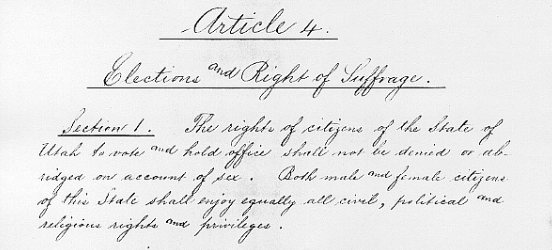
Article 4, Section 1 from the Utah State Constitution, Elections and Right of Suffrage.
The United States system of government, as a representative democracy, relies on citizens to vote and elect representatives to act on their behalf. Founding father James Madison said, “The definition of the right of suffrage is very justly regarded as a fundamental article of republican government.” The U.S. Constitution does not explicitly guarantee a right to vote, but in the absence of a specific enumerated federal law, the Constitution gives each state control over its voting qualifications and election systems. This principle of federalism explains why some states were able to adopt women’s suffrage sooner than others. It also explains why certain constitutional amendments have been necessary to expand voting rights and protections at a national level. While states still maintain control over voting requirements, constitutional amendments have been ratified over time to prohibit discriminating against voters based on factors such as race (15th Amendment); sex (19th Amendment); failure to pay a poll tax (24th Amendment); and age, for those 18 years or older (26th Amendment). These national amendments have extended voting rights to large groups of citizens who were historically denied suffrage.
Key Utah State Standards Addressed
Utah Studies
- Introduction: Students will craft arguments, apply reasoning, make comparisons, and interpret and synthesize evidence as historians.
- 2.4: Students will research multiple perspectives to explain one or more of the political, social, cultural, religious conflicts of this period (1847-1896).
- 2.7: Students will identify the political challenges that delayed Utah’s statehood and explain how these challenges were overcome.
English Language Arts
- Writing Standard 1: Write arguments to support claims with clear reasons and relevant evidence.
Learning Objectives
- Students will be able to explain the complex interplay between suffrage, polygamy, and the struggle for statehood.
- Students will be able to use political cartoons as evidence to craft a historical argument.
Guiding Questions
- How do political cartoonists use persuasive tools to try to convince readers?
- What roles did polygamy and suffrage play in Utah’s struggle for statehood?
- How did national views about Utah women shift during this time period (particularly pre/post-statehood)? And why?
- How did views about Utah suffragists compare with views about suffragists in other states?
Vocabulary
(noun) Drawing a comparison between two unlike things to make a point. Cartoonists often compare a complex situation to a familiar situation.

(noun) Overdoing or emphasizing certain physical characteristics and/or attributes

(noun) An object that stands for itself and a larger concept or idea.
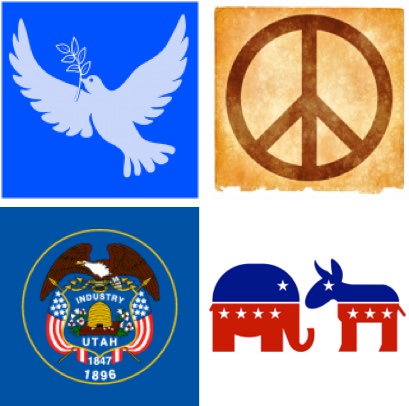
(verb) Identifying who someone is or what an object/place is for the reader through a label or caption.

(noun) The right to vote in a political election
During the women’s suffrage movement, women fought for and won the right to vote in political elections.
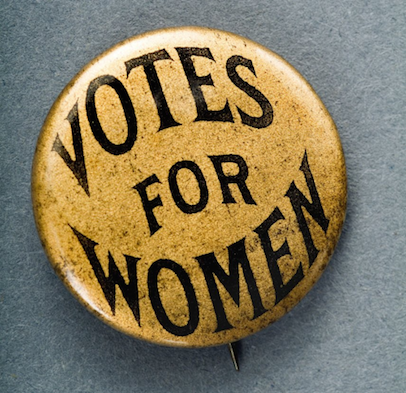
(n) the right to vote
The 19th Amendment granted the franchise to women.
(v) to give the right to vote
The 19th Amendment franchised women.
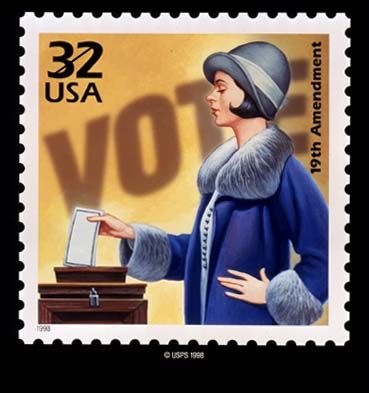
(noun) A marriage system in which a person is married to more than one person at a time.
The Church of Jesus Christ of Latter-day Saints practiced polygamy, in which some husbands had more than one living wife.
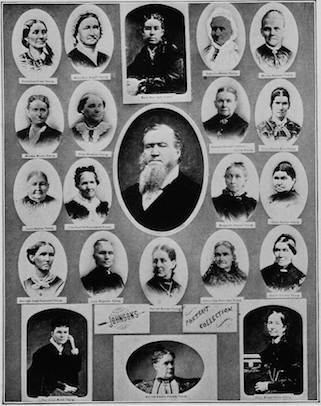
(noun) To take away someone’s right to vote
The Edmunds-Tucker Act caused the disfranchisement of Utah women.
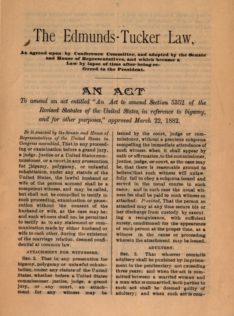
(noun) To give someone the right to vote
Emmeline B. Wells was a Utah leader involved in the enfranchisement of women.
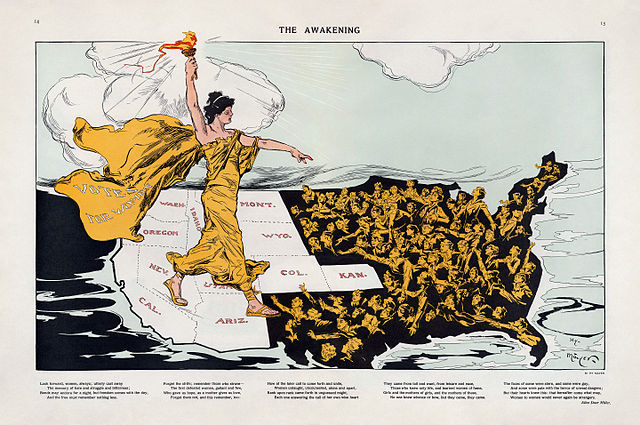
Materials Needed
Enfranchisement (pre-1870)
Disfranchisement (1870-1896)
To use as a comparison to the four cartoons below:
Provide each group with one of the following OR select one to be used across all groups:
Statehood and Re-enfranchisement (1896)
Utah in the National Movement (1897-1920)
Lesson
Activating Background Knowledge
- Ask students if they’ve ever created or shared or seen a meme. You may want to find a popular and current meme to share with your students during this discussion. Why did students either create or share a meme?
- Make the following connections/points:
- Memes are an idea, a video, a catchphrase, or an image with the intent to make people laugh, to make fun others, or to make a point about current events that people share through social media. People find humor and cultural relevancy in the meme and share it through social media.
- Creators of memes want people to share them, so using easily recognizable images from TV or movies is a popular design choice The success of a meme is in how many shares or likes it receives. Memes allow regular citizens to publicly make satirical commentary about politics to a wide audience. Before the internet–and still even today–political cartoonists have long provided commentary through the medium of newspapers, especially when newspapers were the primary medium for the public to receive information. In many ways, memes are the new political cartoons.
- Point out that just like creators of memes want their memes to be popular and widely shared, political cartoonists want to ensure their cartoons are persuasive and memorable.
- Today’s lesson will focus on how political cartoons were used to influence male voters’ and women’s opinions about suffrage and polygamy in Utah–and how the messages of these cartoons changed based on events of the time.
Building Background Knowledge about Techniques Used in Political Cartoons
If your students are already familiar with these techniques, you may move to “Building Background Knowledge about the Historical Context” or use this section as a way to review these techniques.
- Display the political cartoon “Militants” that depicts U.S. suffragists (note: this is not a Utah-specific cartoon, but is being used as a way to discuss cartoonists’ techniques). Model how to use the “Analyzing Political Cartoons Graphic Organizer” as you discuss this cartoon. Ask students to share what they first notice about this cartoon. What images stand out? What words or phrases stand out? What do they notice about the illustrations? What message do they think the cartoonist was trying to convey? Why would the cartoonist choose to convey his message in this way? Explain that political cartoons have long been used to persuade people on matters of current events. They provide a quick snapshot on social commentary. Like writers, political cartoonists use a variety of persuasive tools to make their points and try to convince readers (i.e. exaggeration, symbolism, labeling, analogy, irony). Political cartoonists use these same tools today, and it’s important to be able to interpret a cartoon correctly in order to “get the joke.” Misinterpreting a cartoon might mean misunderstanding another’s point of view.
- Point out to students where these tools are used in “Militants,” or if they are already familiar with these persuasive tools, ask students to work with a partner to see if they can identify where the cartoonist employed these tools. Possible Answers: *Note that a single political cartoon may not reflect all five persuasive tools.
- Exaggeration: women’s facial expressions (very ugly, very angelic, very demonic)
- Symbolism: the halo
- Labeling: captions underneath each row of women
- Analogy: comparison between the three types of women
- Irony: difference between the ways things are and how they should be
Building Background Knowledge about the Historical Context
- Utilize the historical timeline to provide an overview of the four main time periods regarding suffrage (enfranchisement, disfranchisement, statehood and re-enfranchisement, and Utah in the national movement) or have students read the short overview of these time periods, “Receiving, Losing, and Winning Back the Vote” or use the PowerPoint that provides an overview of this history or watch the short video (2:51) about this history.
- Explain that throughout history, various groups have been denied and granted voting rights. Provide an overview of who could vote nationally and in Utah prior to 1870. Use the timeline on the home page as a resource.
- You may also want to remind/review vocabulary with students during this short overview.
Analyzing Primary Source Documents: Political Cartoons
- Group students either into partners or groups of four. Distribute the “Analyzing Political Cartoons Graphic Organizer” (one for each student) and a set of political cartoons to each group (a total of at least four political cartoons with one from each time period). Depending on student needs, you may decide to give each group a different cartoon from the Disfranchisement period or use a single cartoon from this time period with all groups.
- Students examine each cartoon separately, starting with the cartoon from the enfranchisement period. Ask them to do a quick glance of the first cartoon, writing down on their graphic organizers what they notice first. Then, ask them to identify words, phrases, and images.
- Then, ask students to determine the message of the cartoon, considering the cartoonist’s persuasive tools and their level of effectiveness.
- Lastly, have students identify the events that may have impacted these changes. Make sure students use evidence to support their reasoning. Repeat this same process with each cartoon, doing so in chronological order.
- Note about the Disfranchisement period: Use Frank Leslie’s Illustrated Newspaper, 1871, cartoon as a counter to the depiction of Utah women during this time period. Point out that non-Utah suffragists were being depicted as dignified women while their Utah counterparts were not. Ask students to reflect on why this difference existed.
- After students have examined each cartoon, ask them to consider the cartoons as a group. What similarities and differences do they notice? How do the cartoon’s messages and portrayals of Utah women and suffrage remain the same across the time periods? How do they change? Ask students to write a paragraph that summarizes the information they compiled in the table.
Assessment
Have students compose an argument in writing in response to one of the following questions:
- Was polygamy more influential in gaining suffrage or losing suffrage?
- Did women’s suffrage speed up or delay statehood?
Students should use evidence from the political cartoons to support their arguments.
Adaptations
- Have students analyze one political cartoon (rather than four) independently or with a partner.
- Provide a short explanation of each cartoon to help students identify images, symbols, words, etc., that convey the cartoon’s meaning.
- Explain the four time periods to students. Then, have students sort the political cartoons into the time period they represent and explain their choices.
Extensions
- Have students consider the points of view of the Utah women portrayed in these political cartoons from the past. How might Utah women have felt about these portrayals? Ask students to create a political cartoon depicting these women’s points of view. Make sure they utilize persuasive tools and explain their reasons for their content choices in their cartoons.
- Examine political cartoons about giving or denying groups’ voting rights. How do the messages in these cartoons compare to the messages in the Utah women’s suffrage cartoons? (for example, see here and here)
- U.S. Congress took away voting rights in Utah with the Edmunds-Tucker Act in 1887. What are other instances when local, state, or federal government has placed restrictions on voting rights for certain groups. Why? What motivations underpin these restrictions? Do you agree or disagree that there are valid reasons for voting restrictions?
- Have students consider how these political cartoons from the past compare to the ways individuals advocating for women’s rights are portrayed in current political cartoons, in Utah, at a national level (here and here and here), and internationally (here and here).
- Women in Utah were civically-minded and engaged: voting in elections, running for political office, petitioning for causes, leading political and religious organizations. How does this involvement in the past compare to involvement by Utah women today? For more info, read here.
Tell us your experience
We’d love to hear about your experience in using this lesson to engage with your students so that we can better serve those who choose to use this lesson in the future.
Share Your Experience

 baby fist meme
baby fist meme  you can't be late meme
you can't be late meme  Star Wars meme
Star Wars meme